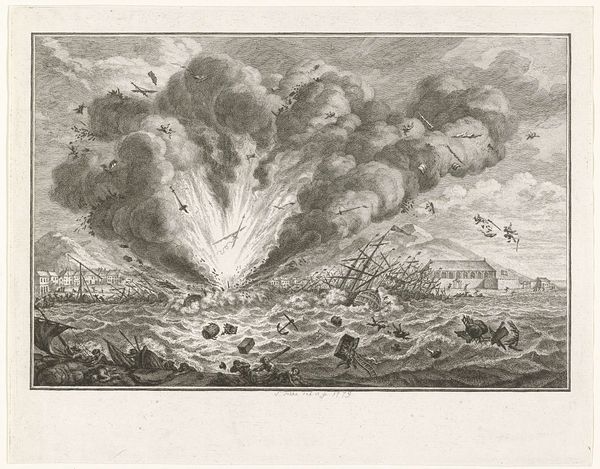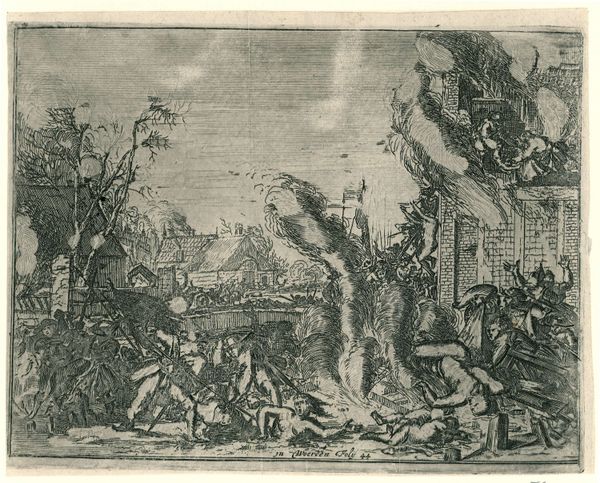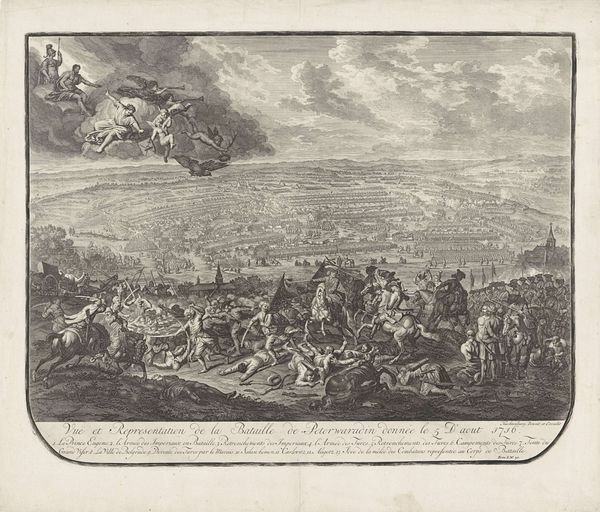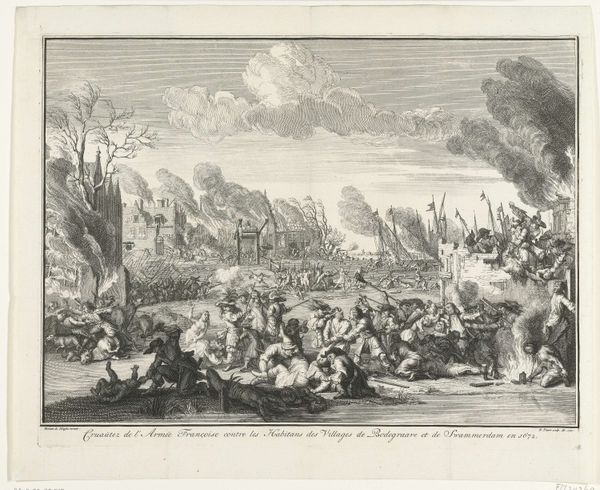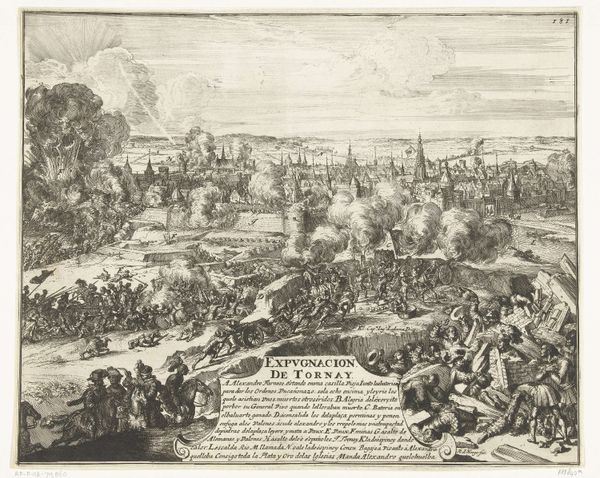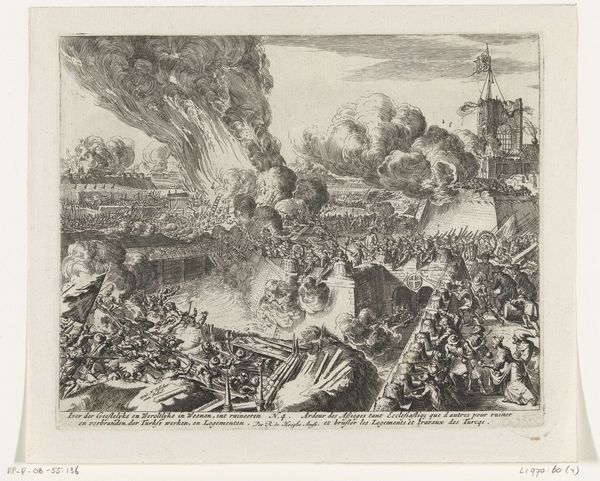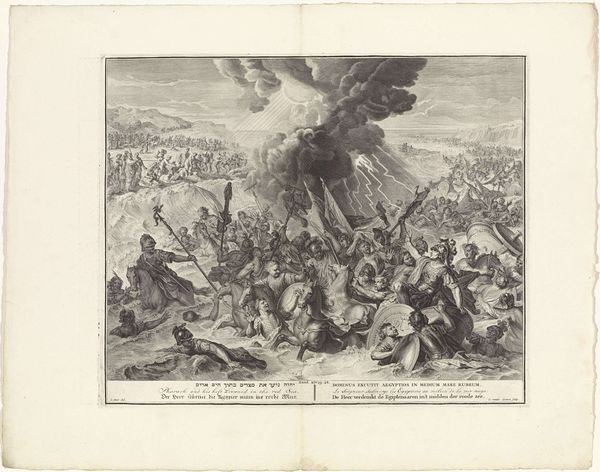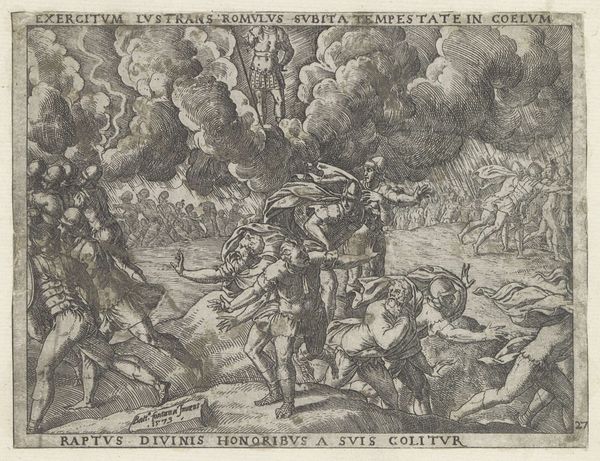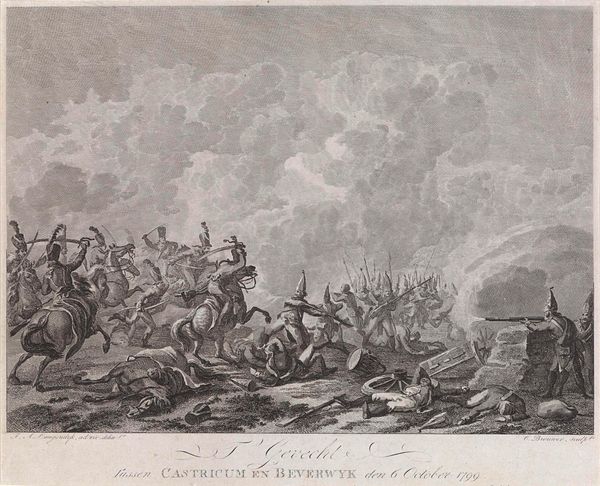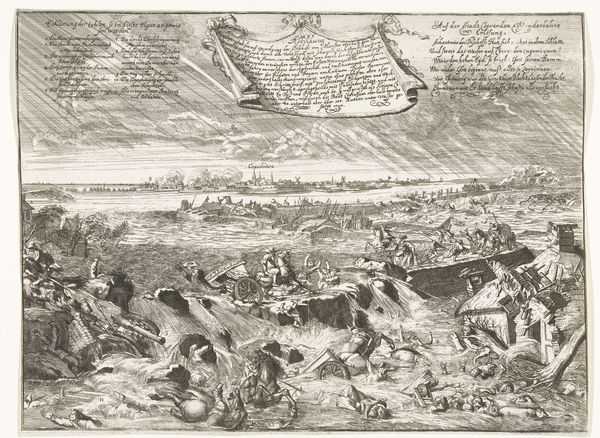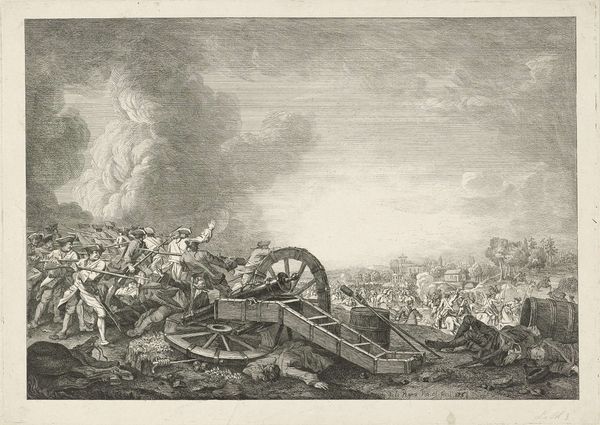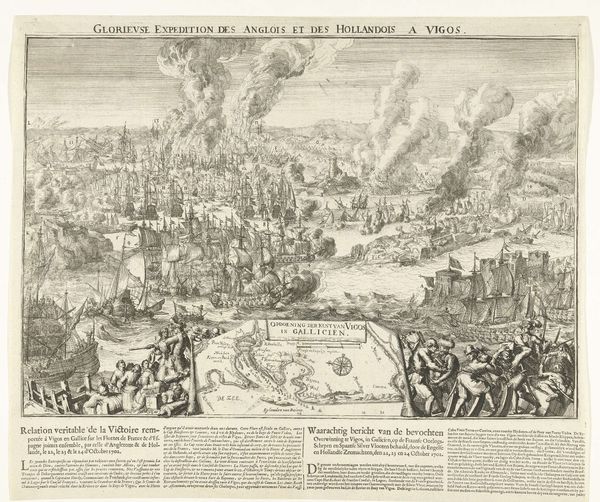
Opblazen van de schipbrug van Parma over de Schelde, 1585 1670 - 1699
0:00
0:00
romeyndehooghe
Rijksmuseum
print, engraving
#
baroque
# print
#
old engraving style
#
cityscape
#
history-painting
#
engraving
Dimensions: height 270 mm, width 342 mm
Copyright: Rijks Museum: Open Domain
Curator: The devastation here is quite dramatic. Romeyn de Hooghe created this engraving, titled "Opblazen van de schipbrug van Parma over de Schelde, 1585," sometime between 1670 and 1699. Editor: It certainly is, and that explosion – it’s rendered so vividly. I see chaos, fragmentation. But it's all held within a structured baroque composition. What does it say about warfare during that era? Curator: The print commemorates a historical event, the Spanish military action where the bridge of ships at Parma was destroyed. It depicts war as both chaotic and strategic, a planned demolition for military advantage, disseminating this view to a broad audience. De Hooghe's detailed work informed public perception of these historical events, constructing collective memory through potent imagery. Editor: I’m struck by how he depicts that powerful blast as radiating light—almost like divine intervention, or maybe fate intervening? Given the context, it feels like a deliberate visual device to heighten the emotional impact. It almost elevates it beyond just a depiction of destruction. Curator: It’s a fascinating point. The explosion becomes almost a symbolic event, which is likely part of de Hooghe’s aim—the propagandistic image that represents a moment in the Eighty Years War. Consider that symbol: destruction for the glory and stability of the Spanish crown, for whom he’s clearly creating the piece. Editor: Even the rendering of human figures seems strategic. They’re scattered and small compared to the monumental explosion. Are they casualties, sacrifices perhaps, to a larger political ideal? Curator: Absolutely. This representation of individuals versus the sweeping action highlights how individuals are subsumed within the greater forces of the conflict. Consider that at the Rijksmuseum where the piece resides, the power in those depictions resides in their political weight. It’s not a personal tale, it’s a calculated political event portrayed for future viewers. Editor: Looking at it that way definitely adds another dimension. What first appeared as raw devastation now feels more like a carefully crafted statement. It highlights the complexities of historical representation. Curator: Indeed. De Hooghe encourages us to question how images shape what we consider history. Editor: A great insight! Thank you.
Comments
No comments
Be the first to comment and join the conversation on the ultimate creative platform.
